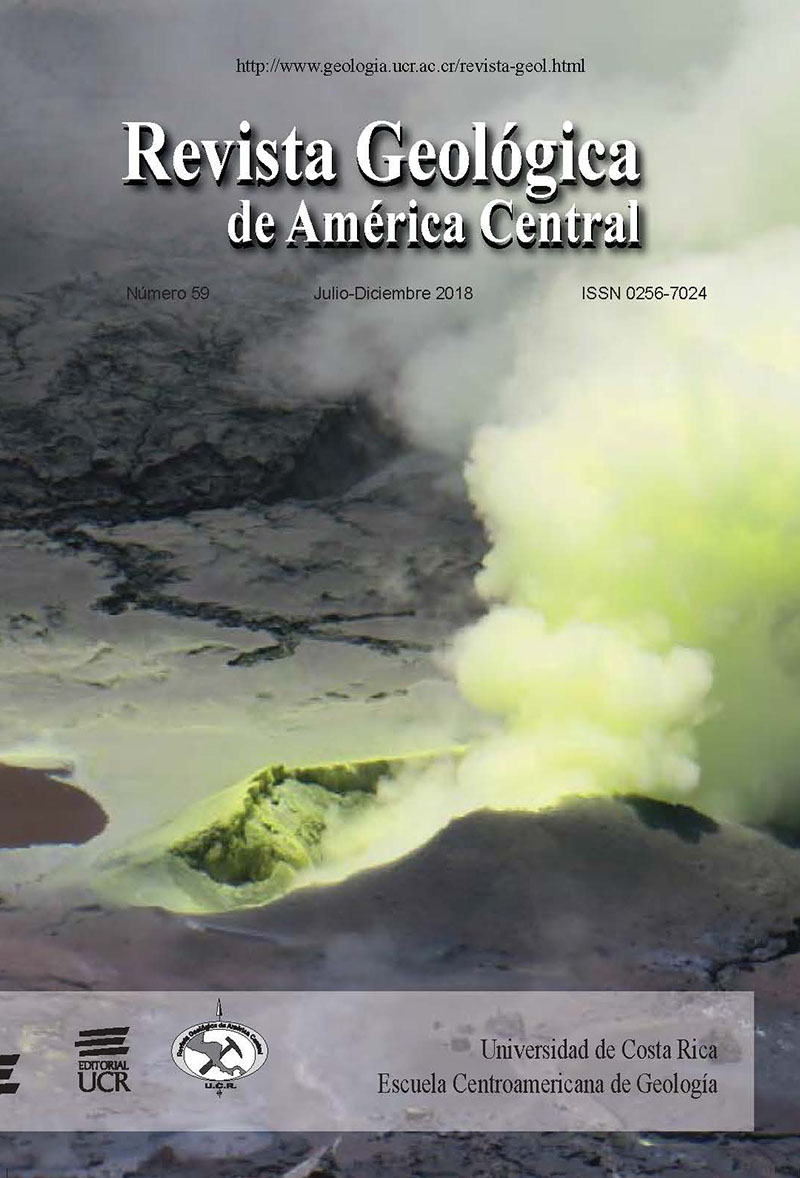Abstract
Since October of 2014, the Turrialba Volcano began an eruptive cycle involving phreatic and phreatomagmatic eruptions. These eruptions signal an important change in behavior of this volcanic system which between 1886 and 2014 was limited to exhalative activity with isolated phreatic eruptions in 2007 and 2011. Overall, this activity involves physical and chemical changes that affect vegetation and fauna, as well as population centers. This situation is therefore of public interest. Thus, controlling and assessing these changes in order to determine possible affected areas is necessary to manage hazards. A remote sensing approach is shown in this paper using the Normalized Difference Vegetation Index (NDVI) and the Normalized Burn Ratio (NBR) to assess the change in vegetation of the surrounding areas close to the crater. This study was done for the period of 2014 to 2017 with Landsat 8 images. A noticeable change is shown for the 2014 to 2016 period, but a more significant one is shown for the 2016 to 2017 period with an increase of the percentage of affected vegetation.References
Alvarado, G. (2008). Los volcanes de Costa Rica: geología, historia, riqueza natural y su gente. (3rd ed.). San Jose, Costa Rica: EUNED.
Araña, V., & López, J. (1974). Volcanismo: dínamica y petrología de sus productos. Madrid: Ediciones Itsmo.
Chuvieco, E. (2010). Teledetección Ambiental (1 ed). Barcelona: Editorial Planeta, S.A.
Corredor Llano, X. (2017). Cloud Masking. Sistema de monitoreo de bosque y carbono SMByC, IDEAM and FAO.
Escuin, S., Navarro, R., & Fernandez, P. (2008). Fire severity assessment by using NBR (Normalized Burn Ratio) and NDVI (Normalized Difference Vegetation Index) derived from LANDSAT TM/ETM images. International Journal of Remote Sensing, 29(4), 1053–1073.
García, C., & Dávila, N. (2014). Discriminación de unidades volcánicas a partir de ímagenes ópticas y radar: estudio de caso volcán de Colima, periodo 2004-2014. Universidad Autónoma del Estado de México.
Gonzaga, C. (2014). Aplicación de Índices de Vegetación Derivados de Imágenes Satelitales Landsat 7 ETM+ y ASTER para la Caracterización de la Cobertura Vegetal en la Zona Centro de la Provincia De Loja, Ecuador. Universidad Nacional de la Plata. Retrieved from http://sedici.unlp.edu.ar/handle/10915/34487
McKinnon, T. (2016). Agricultural Drones: What Farmers Need to Know. Boulder, Colorado.
RSN. (2017). Turrialba. Retrieved January 9, 2018, from http://www.rsn.ucr.ac.cr/actividad-volcanica/volcanes-costa-rica
Sobrino, J. A., & Raissouni, N. (2000). Toward remote sensing methods for land cover dynamic monitoring: Application to Morocco. International Journal of Remote Sensing, 21 (2), 353–366. http://doi.org/10.1080/014311600210876
Tortini, R., van Manen, S. M., Parkes, B. R. B., & Carn, S. A. (2017). The impact of persistent volcanic degassing on vegetation: A case study at Turrialba volcano, Costa Rica. International Journal of Applied Earth Observation and Geoinformation, 59, 92–103.
Tucker, C. J., Dregne, H. E., & Newcomb, W. W. (1991). Expansion and contraction of the Sahara Desert from 1980 to 1990. Science, 253(5017), 299–301.
U.S. Geological Survey. (2015). Landsat—Earth observation satellites: Fact Sheet. Reston, VA. http://doi.org/http://dx.doi.org/10.3133/fs20153081.
U.S. Geological Survey. (2016). Landsat 8 (L8) data users handbook. U.S.A. Retrieved from https://landsat.usgs.gov/sites/default/files/documents/Landsat8DataUsersHandbook.pdf
U.S. Geological Survey. (2017). Landsat Project Description. Retrieved January 9, 2018, from https://landsat.usgs.gov/landsat-project-description
Zhu, Z., Wang, S., & Woodcock, C. E. (2015). Improvement and expansion of the Fmask algorithm: cloud, cloud shadow, and snow detection for Landsats 4–7, 8, and Sentinel 2 images. Remote Sensing of Environment, 159, 269–277. http://doi.org/https://doi.org/10.1016/j.rse.2014.12.014
Zhu, Z., & Woodcock, C. E. (2012). Object-based cloud and cloud shadow detection in Landsat imagery. Remote Sensing of Environment, 118, 83–94. http://doi.org/https://doi.org/10.1016/j.rse.2011.10.028.
##plugins.facebook.comentarios##

This work is licensed under a Creative Commons Attribution-NonCommercial-ShareAlike 3.0 Unported License.
Copyright (c) 2018 Revista Geológica de América Central






